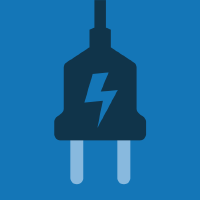Topic Editors


Intelligent Control in Smart Energy Systems
Topic Information
Dear Colleagues,
The Topic on “Intelligent Control in Smart Energy Systems” aims to present the most advanced and latest research developments, focusing on intelligent control techniques and their potential applications in smart energy systems. The topics include, but are not limited to:
- Intelligent control
- Computational intelligence for modelling and control
- Energy management
- Integrated energy systems
- Smart grids
- Sustainable energy
- Energy efficiency
- Control theory
- Control systems
- Adaptive control
- Robust control
- Smart energy systems
- Renewable energy
- Algorithm
Prof. Dr. Eduard Petlenkov
Dr. Larbi Chrifi-Alaoui
Topic Editors
Participating Journals
| Journal Name | Impact Factor | CiteScore | Launched Year | First Decision (median) | APC | |
|---|---|---|---|---|---|---|

Electricity
|
- | - | 2020 | 20.3 Days | CHF 1000 | Submit |

Energies
|
3.2 | 5.5 | 2008 | 16.1 Days | CHF 2600 | Submit |

Mathematics
|
2.4 | 3.5 | 2013 | 16.9 Days | CHF 2600 | Submit |

Sustainability
|
3.9 | 5.8 | 2009 | 18.8 Days | CHF 2400 | Submit |

Symmetry
|
2.7 | 4.9 | 2009 | 16.2 Days | CHF 2400 | Submit |

MDPI Topics is cooperating with Preprints.org and has built a direct connection between MDPI journals and Preprints.org. Authors are encouraged to enjoy the benefits by posting a preprint at Preprints.org prior to publication:
- Immediately share your ideas ahead of publication and establish your research priority;
- Protect your idea from being stolen with this time-stamped preprint article;
- Enhance the exposure and impact of your research;
- Receive feedback from your peers in advance;
- Have it indexed in Web of Science (Preprint Citation Index), Google Scholar, Crossref, SHARE, PrePubMed, Scilit and Europe PMC.

